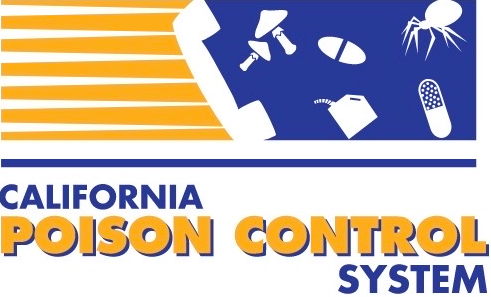By Jeffrey R. Suchard, MD
Introduction
Loxosceles reclusa, or the brown recluse spider is one of the most feared and at the same time misunderstood arthropods in the United States. Although their venom contains several enzymes and other agents capable of causing skin necrosis, these spiders are shy and rarely ever bite except when threatened. Our common human fear of spiders has helped propagate the undeserved reputation of this spider.
Case 1 presentation
A 38-year-old man presents to an Emergency Department in Orange County, California for evaluation of a brown recluse spider bite. He reports seeing a "violin" spider crawling on his arm about an hour earlier. He thinks that the spider bit him, although he cannot be certain because he immediately crushed the spider and then cut a 0.5 cm incision into his arm and proceeded to "suck out the poison." He is tachycardic and very anxious, but has a normal physical examination other than some mild erythema surrounding the non-bleeding, superficial incision. He is wondering whether he requires antitoxin, antibiotics, or possibly amputation, since his friends have told him that brown recluse spider bites are often fatal. The spider was described as less than 1 cm in size, dark-colored (brown or black), and having a body shaped like a violin, rather than having a violin-shaped marking on its cephalothorax.
Case 2 presentation
A 36-year-old woman was convinced by her mother to seek immediate medical care for a 3x4 cm necrotic skin lesion to her breast. Six days earlier, the patient saw her primary physician in the southeastern California desert, and he diagnosed a brown recluse spider bite. The patient reported having seen spiders in her home, although she could not recall a specific biting incident. She also reported that the lesion had improved somewhat with oral fluoroquinolone therapy and that she had no fevers or chills. The patient was also an insulin-dependent diabetic, with a beside glucose measurement >500 mg/dL. She had forgotten to bring her insulin when she traveled to visit her mother yesterday. The patient refused treatment for hyperglycemia and any further evaluation to rule out diabetic ketoacidosis, and left the hospital against medical advice.
Questions
- What is the real diagnosis for each case?
- Are any Loxosceles spiders actually present in California?
Epidemiology
Loxosceles reclusa, the brown recluse spider, is endemic to the south-central United States, ranging from Texas to Georgia and from Louisiana to Iowa.1 Isolated specimens have been found in association with recent shipments of goods into California from endemic areas, although reports of such brown recluse spider stowaways are extraordinarily rare (less than 10 have ever been collected2) and could not cause even a tiny fraction of the large number of alleged bites reported in this state. Some other species of the Loxosceles genus are found in the southwest United States, but they tend to cause less serious envenomations than the brown recluse. The range of the desert recluse (Loxosceles deserta), for instance, extends into areas of southeastern California bordering on Arizona, although this fails to coincide with areas of dense human population where reports of necrotic arachnidism are most common. In regions where Loxosceles reclusa spiders are commonly found, they infrequently cause clinically significant envenomations. Because of their shy, reclusive nature, these spiders rarely come into contact with people. Homes in endemic areas often contain several hundred spiders, yet the human inhabitants almost never suffer bites.3
Despite these facts, many patients in non-endemic areas like California continue to believe that their skin lesions are caused by brown recluse spiders. What factors could explain the high incidence of reported “brown recluse spider” bites? First, many people have irrational fears about insects and other arthropods. Spiders may be especially maligned because of their known predatorial nature, at least with regard to other arthropods, which is falsely assumed to extend to humans as well. Second, the human psyche would prefer to believe that unexplained signs and symptoms are caused by some external source instead of a somatic illness or weakness. Such beliefs may persist in the face of overwhelming evidence to the contrary. Third, the wide differential diagnosis for necrotic skin lesions is not always considered, and such lesions are instead ascribed to a spider bite. The differential diagnosis of necrotic skin lesions is extensive. Misdiagnosing dermonecrotic wounds of unclear etiology as spider bites is a worldwide issue, and has been reported in other countries such as Australia, New Zealand and Brazil.4,5 Finally, the “deadly” reputation of these spiders has been largely predicated by the lay press and literature, with even mystery novels implicating fatal reactions following a significant bite.
Pathophysiology
True envenomation by the brown recluse spider is associated with development of necrotic skin wounds. Loxosceles reclusa venom contains several cytotoxic enzymes. Skin ulceration results from a combination of localized endothelial cell damage by venom and ischemia secondary to inflammation caused by leukocyte infiltration. Hemolysis and intravascular coagulation may occur in cases of systemic toxicity. However, the pathophysiology of alleged brown recluse spider bites is as varied as the potential causes of dermonecrotic wounds.
Clinical presentation
Actual brown recluse spider bites are reported to feel like a pinprick. Within a few hours, the bitten area can become tender, itchy, tingly, or swollen; sometimes an erythematous skin reaction surrounded by pallor (a “target” lesion) can be seen shortly after envenomation. A purpuric lesion or blister may form at the site, which develops into an eschar with surrounding induration and edema. A necrotic ulcer forms when the eschar separates. Ulceration may occur within several hours or up to 2 weeks after envenomation. The ulcers may take weeks to months to heal. In addition, systemic complications such as nausea, vomiting, abdominal pain, fevers and chills have been reported. Cases of hemolytic anemia have also been associated with Loxosceles bites, especially in children.
Diagnosis
Physicians with expertise in treating necrotic arachnidism report that misdiagnosis is a common problem, even in brown recluse-endemic areas.6,7 Many causes of necrotic skin lesions exist, including various bacterial, viral, and fungal infections, primary dermatitides, vasculitides, thromboembolic phenomena, drug side-effects, diabetic and artifactual ulcers, skin cancer, the bites of other arthropods or animals, and even chemical burns. Most claims of spider bites, especially in California, have upon further investigation been attributed to other causes. Without a reliable eyewitness history or capture of the offending vector, any claim of a spider bite, particularly a brown recluse spider bite in a non-endemic area, should be viewed skeptically.
Yet another curious phenomenon related to alleged spider bites is the unclear purpose of making such a diagnosis. The great majority of actual and presumed necrotic arachnidism cases in endemic areas have a benign clinical course.8,9 Most patients are treated with local wound care and, at times, oral antibiotics. Only a few percent of patients go on to require skin grafting or hospitalization. If a patient’s dermonecrotic wound is from a bacterial infection, as many likely are, misdiagnosis as a spider bite is not terribly serious, as the most commonly used treatment regimen would be indicated anyway. Because such patients will improve, they will conclude that the diagnosis of a brown recluse spider bite was correct, further promoting the myth. The primary purpose in diagnosing necrotic arachnidism, then, appears to be aimed simply at providing a tangible and remotely plausible label for an otherwise unidentified disease process.
A recently reported trend among alleged spider bites in California is the presence of infection with methicillin-resistant Staphylococcus aureus (MRSA). Outbreaks of MRSA infection among correctional facility inmates have been reported in California and a few other states.10,11 In Los Angeles county, an outbreak was initially ascribed to spider bites. Tight clustering of persons with sub-optimal skin hygiene has been postulated as a cause.
A similar outbreak of MRSA-associated cellulitis, abscesses, and necrotizing fasciitis has occurred in a drug rehabilitation halfway-house located near UCI Medical Center: each patient was convinced they had been bitten by a brown recluse spider. Other notable cases of alleged spider bites we have seen include pyoderma gangrenosum (confirmed by biopsy) and angiotensin converting enzyme inhibitor-induced angioedema. Freedman et al. reported a case of bioterrorism-related cutaneous anthrax in a 7-month-old infant that was initially misdiagnosed as a brown recluse spider bite.12 The extreme unlikelihood of a recluse spider bite occurring in Manhattan did not initially sway the physicians from this diagnosis, nor did it alter their treatment regimen of a necrotic skin wound with associated systemic complications. When this epidemiologic point was brought to their attention, the authors responded that anthrax was also nearly impossible (despite multiple highly-publicized cases of cutaneous and inhalational anthrax at the time), and that a spider was postulated to have hidden “within the infant’s stroller or the family’s belongings” during a recent trip to Loxosceles-endemic regions.13
Treatment
Proper treatment of necrotic skin wounds obviously relies first on an accurate diagnosis. Most cases of alleged brown recluse spider bites are probably due to skin infections; cultures should be obtained to confirm the diagnosis, and the patient can be treated with appropriate antibiotics and routine local wound care measures. Dermatology consultation may benefit patients whose wounds do not appear to respond to this treatment, and referral to a surgeon can also be considered.
- Vetter RS. Myth: idiopathic wounds are often due to brown recluse or other spider bites throughout the United States. West J Med 2000;173:357-358.
- Vetter R. Myth of the brown recluse: fact, fear, and loathing. Available at: spiders.ucr.edu/myth.html, accessed November 16, 2003.
- Vetter RS, Barger DK. An infestation of 2,055 brown recluse spiders (Araneae: Sicariidae) and no envenomations in a Kansas home: implications for bite diagnosis in nonendemic areas. J Med Entomol 2002;39:948-951.
- Isbister GK. Spider mythology across the world. West J Med 2001;175:86-87.
- Nishioka Sde A. Misdiagnosis of brown recluse spider bite. West J Med 2001;174:240.
- Anderson PC. Loxocelism and the history of the Missouri brown spider: a recollection of Dr. Joseph Flynn. Mo Med 1990;87:747-752.
- Wasserman GS. Brown recluse spider envenomations. In The Clinical Practice of Emergency Medicine, 3rd edition. Harwood-Nuss A, ed. Lippincott Williams & Wilkins, Philadelphia. 2001. pp.1638-1640.
- Wright SW, Wrenn KD, Murray L, Seger D. Clinical presentation and outcome of brown recluse spider bite. Ann Emerg Med 1997;30:28-32.
- Cacy J, Mold JW. The clinical characteristics or brown recluse spider bites treated by family physicians: an OKPRN study. Oklahoma Physicians Research Network. J Fam Pract 1999;48:536-42.
- CDC. Outbreak of community-associated methicillin-resistant Staphylococcus aureus skin infections – Los Angeles County, California, 2002-2003. MMWR 2003;52:88.
- CDC. Methicillin-resistant Staphylococcus aureus infections in correctional facilities – Georgia, California, and Texas, 2001-2003. MMWR 2003;52:992-996.
- Freedman A, Afonja O, Chang MW, et al. Cutaneous anthrax associated with microangiopathic hemolytic anemia and coagulopathy in a 7-month-old infant. JAMA 2002;287:869-874.
- Suchard JR, Friedlander AM, Borkowsky W, Chang MW. Diagnosis and treatment of cutaneous anthrax. JAMA 2002;288:43-44. [Letter]
Summary and discussion of case questions
The first patient was suffering from arachnophobia-generated anxiety, in addition to an unnecessary, self-inflicted minor skin incision. The patient was informed that his description of the spider was inconsistent with Loxosceles reclusa. The patient had his tetanus immunization status updated and was discharged home; the final diagnosis was "possible arthropod bite."
The second patient did not have a convincing history of spider exposure, let alone an actual bite. Her history was much more consistent with poorly controlled diabetes and a superimposed necrotic skin infection, most likely from skin flora. The diagnosis was therefore ecthyma. Since the lesion was improving, the patient was advised to continue the oral fluoroquinolone and to follow-up with her primary physician.
To reiterate, although they are not endemic to the region, Loxosceles spiders have occasionally been found in various parts of California, mostly due to stowaways during travel. Recently, colonies of L. laeta, a South American native species brought into this country during immigration, have been found more frequently in Los Angeles, and appear to have become established. Significant necrotic bites from these spiders can occur but have not yet been well documented in this country.
Consultation assistance
A resource for information on arthropod bites in southern California is Rick Vetter, PhD, an arachnologist with the Department of Entomology at UC Riverside. In addition to publishing works about actual and alleged spider bites, some of which are referenced above, Dr. Vetter is willing to review and identify any suspected brown recluse spider. More details: The Former “show me the spider” Brown Recluse Challenge.
In addition, poison specialists and physicians skilled in the diagnosis and management of spider and other arthropod bites and stings can be reached at the California Poison Control System hot line.



